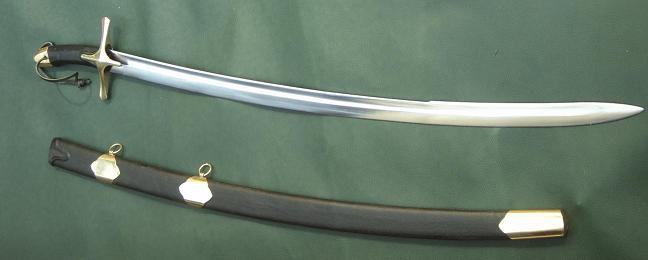Mikko Kuusirati

|
 Posted: Tue 12 Nov, 2013 3:17 am Post subject: Suspension system for a 16th Century Ottoman saber Posted: Tue 12 Nov, 2013 3:17 am Post subject: Suspension system for a 16th Century Ottoman saber |
 |
|
I recently became the happy owner of this Turkish saber and am looking to make a suspension system for it:

For reference, this style of early kilic would have been right at home at Mohács or the 1529 Siege of Vienna, as portrayed in "The Shadow of the Vulture", on either side of the conflict - even Red Sonya herself is described wearing "a long Hungarian saber", and at the time many of them were of exactly this style; this thread has some further discussion and period artwork. I'm a great fan of Robert E. Howard in general and that story in particular, so I'm looking to make something accurate for the late 1520s, specifically. If you can think of some small detail that could date it to that time, that would be just great. 
From what I've been able to gather, a belt or sash with one or two suspension points seems to have been the most common method of carrying these swords, but none of the period illustrations (or the scans thereof) display the belts, the connecting straps or the way they're attached with sufficient clarity or detail for my purposes, and none of the actual surviving swords I've found have these accessories intact. I could really use a good reference on this!
I did come across an interesting, albeit much later belt on a Persian shamshir on Oriental Arms:


It looks like something I'd be able to make a somewhat plainer version of with no undue difficulty and, like I said, the design is interesting... Could something like this have been used in early 16th Century?
Another possibility, although apparently not remotely as common in the period, would be a light baldric of some sort. These seem to have been very popular on later Ottoman swords, like this shamshir with toggles instead of buckles (also from Oriental Arms):

I've seen similar looking knotted baldrics on everything from Turkish kilic to Burmese dha - what exactly are they made of? It looks like some kind of soft, fabric-covered rope or cord, like an early version of Paracord...
"And sin, young man, is when you treat people like things. Including yourself. That's what sin is."
— Terry Pratchett, Carpe Jugulum
|
|

